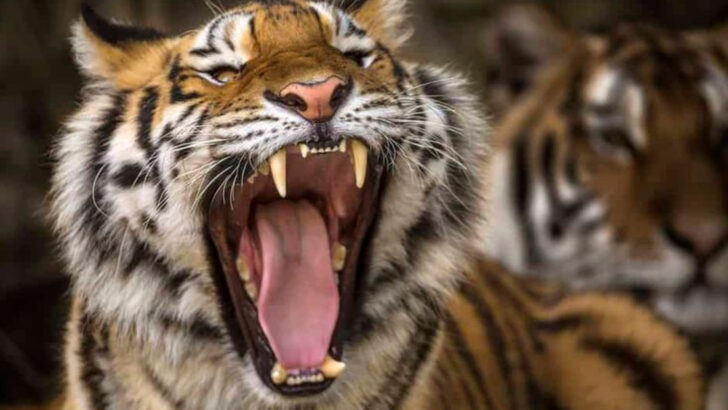Some animals don’t need speed or stealth—they crush their way to the top.
When jaws slam shut with the force of a sledgehammer, bones break, shells shatter, and prey doesn’t stand a chance. From jungle predators to deep-sea monsters, bite force is the raw, bone-snapping power that rules the food chain.
These creatures don’t nibble. They obliterate.
Whether it’s a crocodile that can crush steel or a tiny fish with a bite that defies belief, the animal kingdom is full of jaw-dropping surprises—literally. Teeth, muscle, and sheer force combine to create some of the most fearsome mouths on Earth.
Ready to meet the true biters of the wild?
Here are 24 animals with bite forces so strong, they could turn your dinner plate into powder.
Saltwater Crocodile
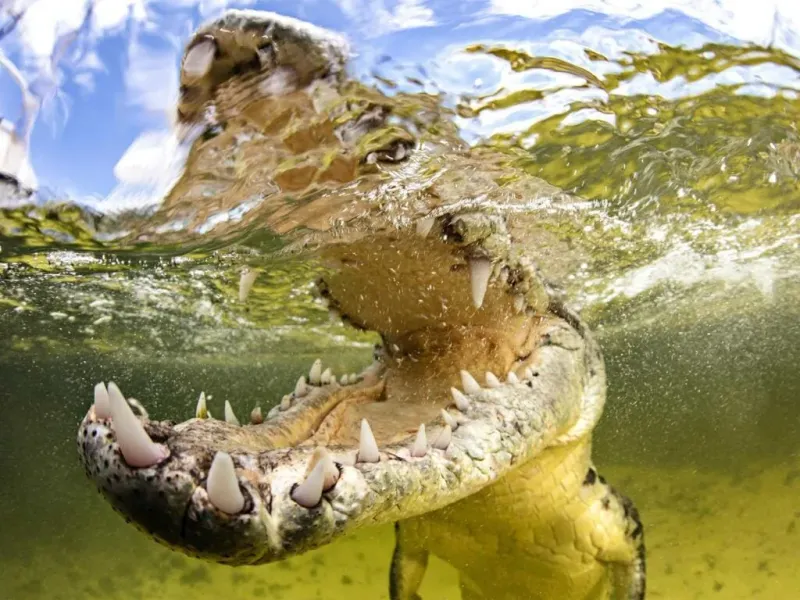
The saltwater crocodile holds the record for the strongest bite force among living animals. This formidable predator, native to Australia and Southeast Asia, can exert a force of up to 3,700 pounds per square inch.
Its jaw strength is a result of evolution, enabling it to crush turtle shells and capture large prey. These crocodiles are feared yet respected by local communities.
Despite their terrifying reputation, they play a crucial role in maintaining the health of aquatic ecosystems. Their presence is a testament to nature’s incredible power and adaptability.
Great White Shark
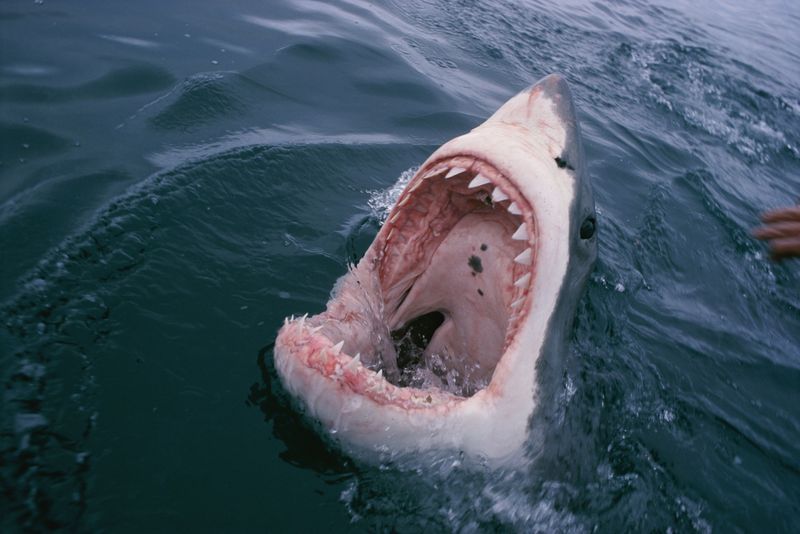
With its notorious reputation, the great white shark possesses one of the strongest bite forces among marine animals. Capable of exerting 4,000 pounds per square inch, these sharks are apex predators of the ocean.
Their bite is not just about strength but precision, used to efficiently catch and subdue prey. Known for their intelligence, great whites exhibit strategic hunting techniques.
They are often misunderstood creatures, vital for the marine ecosystem’s health. Their presence ensures the balance of the species below them in the food chain.
Hippopotamus
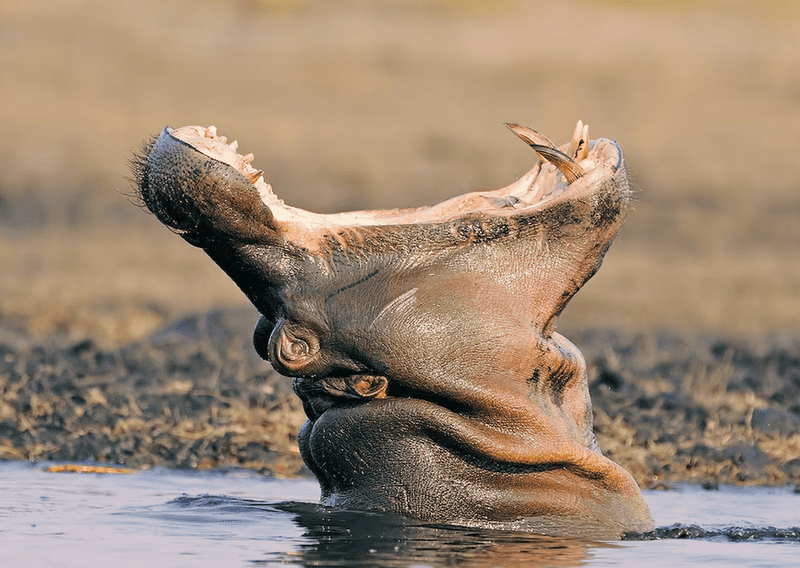
The hippopotamus, though seemingly docile, wields a powerful bite force capable of crushing bones. With a pressure of up to 2,000 pounds per square inch, their jaws are among the strongest in the animal kingdom.
These giants are primarily herbivorous, yet territorial, using their bite as a defense mechanism. In Africa, hippos are considered one of the most dangerous animals.
Their unpredictable nature and immense strength make them fascinating yet formidable components of their environment.
Jaguar

The jaguar, native to the Americas, boasts the strongest bite force of all big cats. Capable of piercing turtle shells, its 1,500 pounds per square inch bite is adapted for the dense forests it inhabits.
Jaguars use their powerful jaws to capture and kill prey efficiently, often targeting the skull for a swift end. Their role as apex predators is crucial for maintaining ecological balance.
These majestic creatures embody strength and grace, with their spotted coats camouflaging them perfectly within their environment.
Gorilla
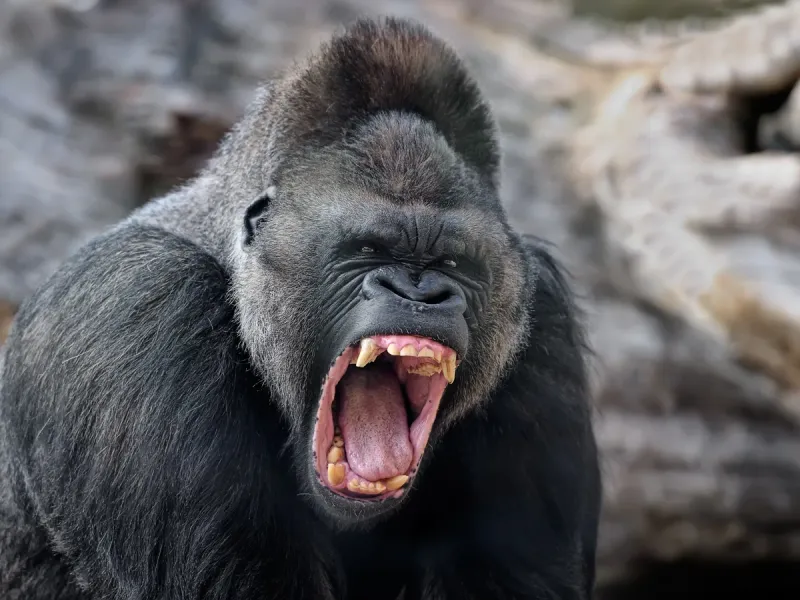
Gorillas, the largest of the primates, have an impressive bite force used primarily for chewing tough vegetation. A gorilla’s bite can exert a force of 1,300 pounds per square inch, necessary for their fibrous diet.
These gentle giants are remarkably strong, yet their diet is mainly herbivorous. In social interactions, their bite force symbolizes dominance and protection within their groups.
Gorillas play a critical role in their ecosystem, aiding in seed dispersion and forest maintenance.
Polar Bear
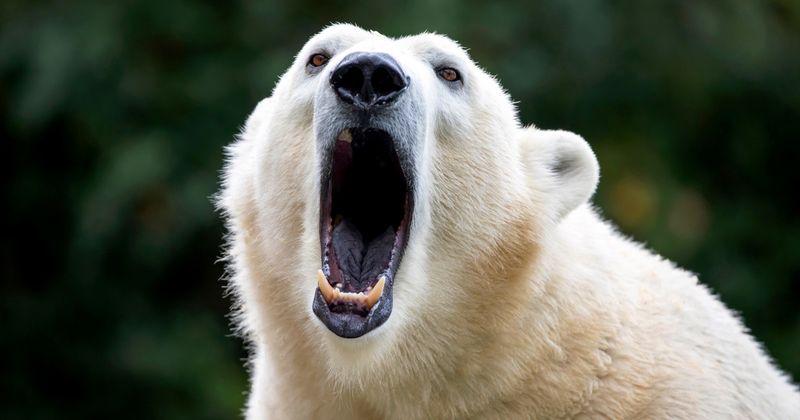
Polar bears, the largest land carnivores, possess a powerful bite force crucial for hunting seals. Their bite can exert 1,200 pounds per square inch, necessary to penetrate thick blubber.
Adapted to the harsh Arctic environment, these bears showcase incredible strength and endurance. Their hunting skills are unparalleled, relying on both their bite and stealth to survive.
Polar bears play an essential role in the Arctic ecosystem, their presence indicative of the health of this fragile environment.
Hyena
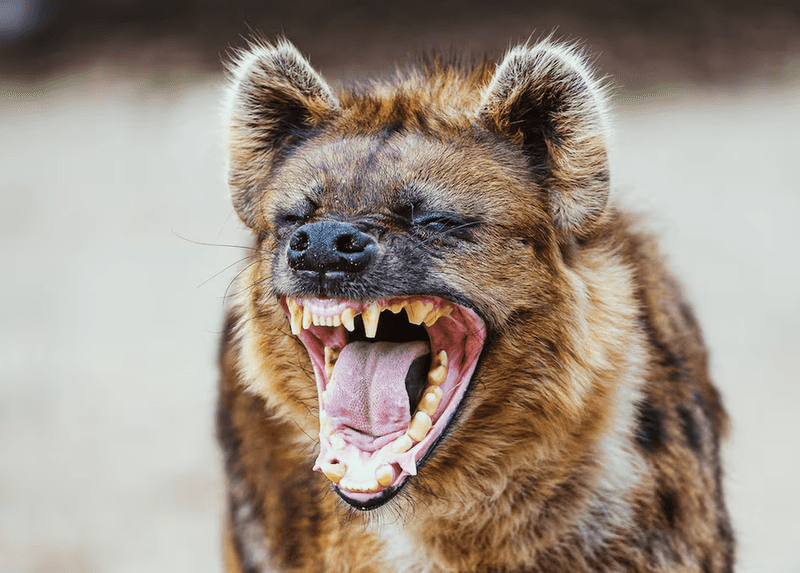
The spotted hyena possesses one of the strongest bite forces among land animals. Capable of exerting 1,100 pounds per square inch, they can crush bones to access nutritious marrow.
These social animals are often misunderstood as mere scavengers, yet they are skilled hunters. Hyenas play a vital role in the ecosystem by controlling prey populations and cleaning up carcasses.
Their complex social structures are fascinating, with matriarchal societies leading the pack.
Bengal Tiger
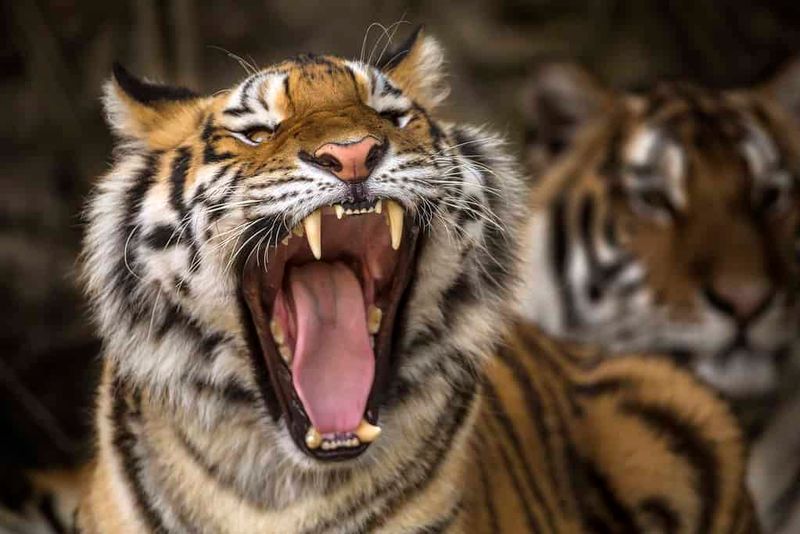
The Bengal tiger, known for its strength and agility, possesses a formidable bite force. Their jaws can exert up to 1,050 pounds per square inch, enabling them to take down large prey like deer and buffalo.
These solitary hunters rely on stealth and power, often stalking their prey before delivering a fatal bite. Tigers are symbols of strength and beauty in Indian culture, playing a vital role in the biodiversity of their habitat.
Their presence helps maintain the ecological balance in their regions.
Alligator Snapping Turtle
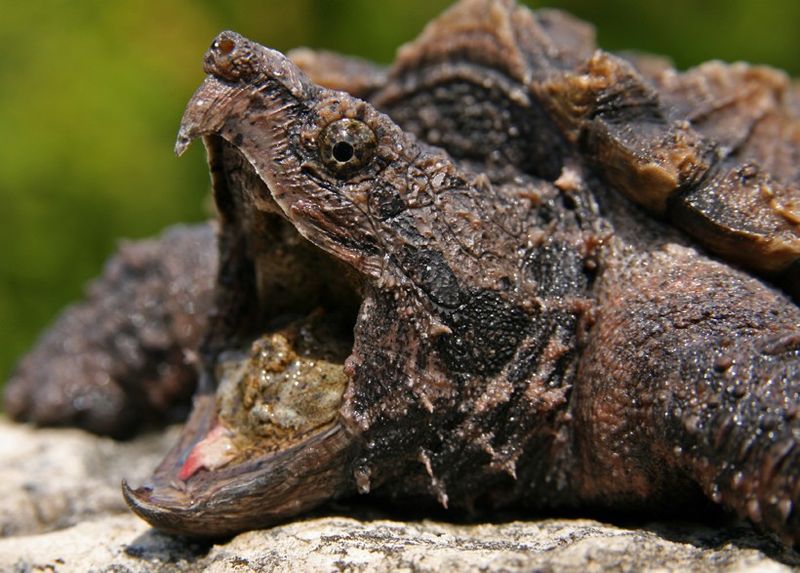
The alligator snapping turtle, a prehistoric-looking creature, is known for its powerful bite. With a force of up to 1,000 pounds per square inch, they can easily crush bones and shells.
This turtle’s jaw strength is used for defense and capturing prey. Its unique appearance, with a spiked shell and worm-like tongue, helps lure fish into its deadly jaws.
These turtles play an important role in their aquatic environments, controlling fish populations and cleaning up carrion.
Lion
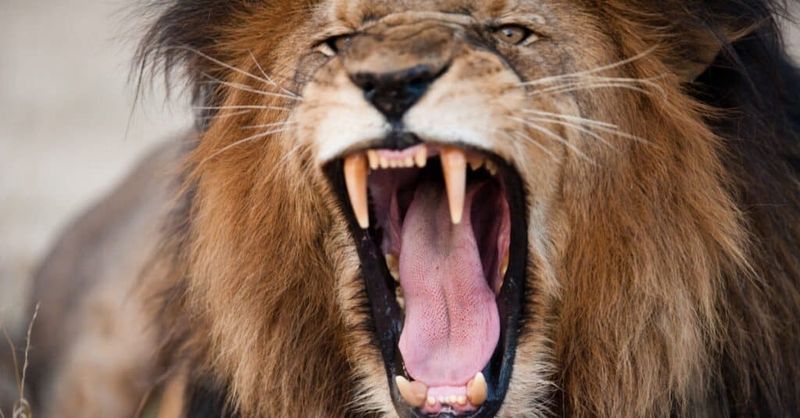
Lions, often called the “king of the jungle,” have a bite force that reflects their regal status. Able to exert around 650 pounds per square inch, their bite is crucial for taking down large prey.
These social felines hunt in prides, using coordinated strategies to capture and kill. Lions are iconic symbols of courage and strength, deeply embedded in various cultures.
They play a critical role in maintaining the balance of their ecosystem by controlling herbivore populations.
American Alligator
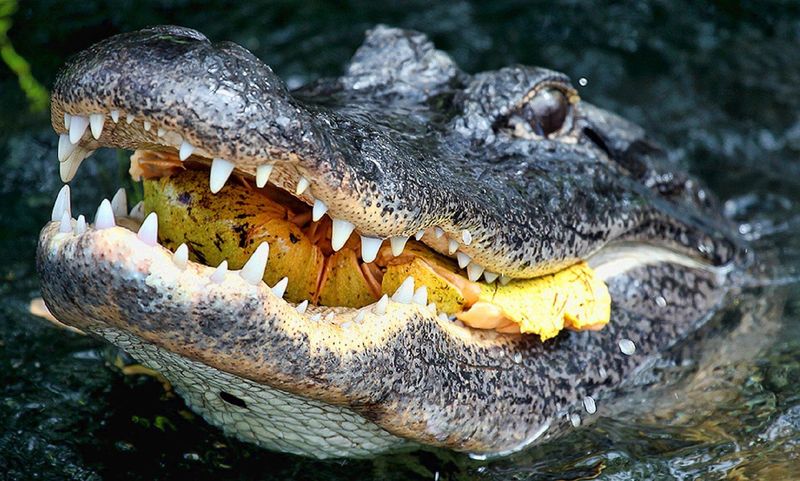
The American alligator is renowned for its strong bite force, capable of exerting 2,125 pounds per square inch. This force is essential for capturing and subduing prey like fish and turtles.
Alligators use their powerful jaws not just for hunting but also for building nests and defending territories.
Found in the swamps of the southeastern United States, they are vital to their ecosystem, helping control the population of prey species and maintaining waterway health.
Caiman
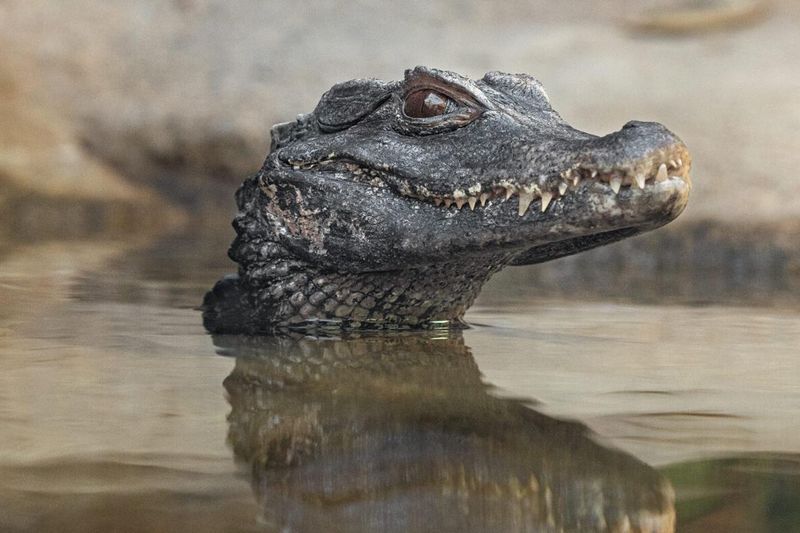
Caimans, close relatives of alligators, boast a significant bite force of around 1,500 pounds per square inch. This strength allows them to crush bones and capture large prey.
In the Amazon, caimans are apex predators, playing a crucial role in their aquatic habitats. They contribute to ecological balance by keeping fish and mammal populations in check.
Despite their fearsome reputation, caimans are essential for the health of their environment.
Wolverine
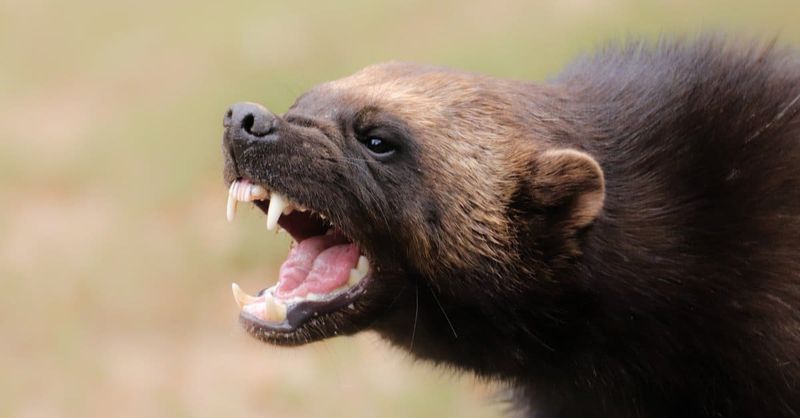
The wolverine, known for its fierce nature, possesses a surprisingly strong bite force for its size. Capable of exerting up to 500 pounds per square inch, they can crush bones and tear through frozen meat.
These solitary animals are skilled scavengers, often taking on prey much larger than themselves. Wolverines play a vital role in their ecosystem, cleaning up carrion and spreading nutrients. Despite their small size, they embody the rugged spirit of the wilderness.
Tasmanian Devil
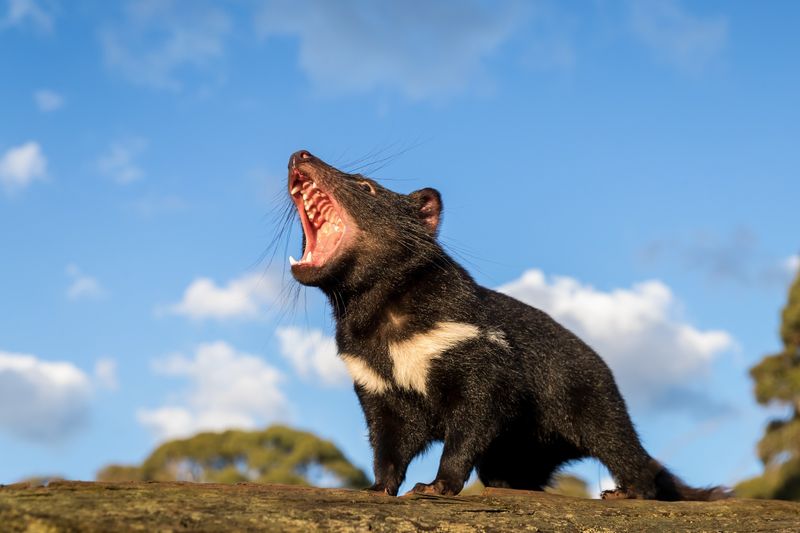
The Tasmanian devil, with its ferocious reputation, has a bite force that belies its size. It can exert roughly 553 pounds per square inch, enough to crush bones.
Native to Tasmania, these carnivorous marsupials are key scavengers in their environment. Their powerful jaws help them consume carcasses, preventing the spread of disease.
The Tasmanian devil’s unique role in the ecosystem highlights the importance of all species, regardless of size.
Komodo Dragon
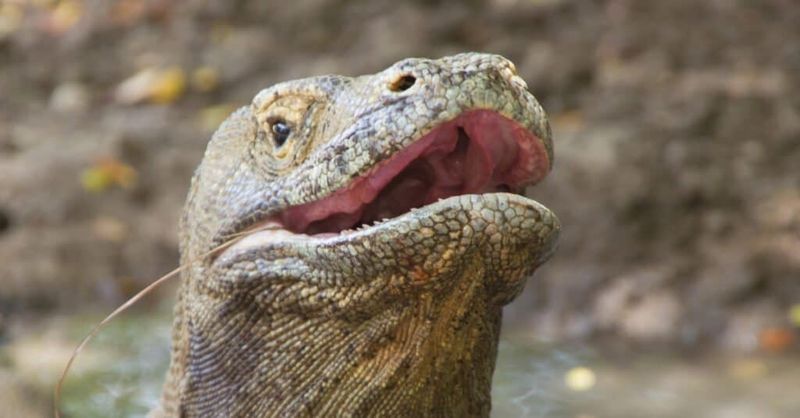
Komodo dragons, the largest lizards on Earth, wield a potent bite force aided by toxic saliva. Their bite can exert up to 600 pounds per square inch, combined with venom that incapacitates prey.
These ancient reptiles are apex predators in their island habitats, hunting deer and smaller animals. The Komodo dragon’s bite is a perfect adaptation for survival in the harsh environments they inhabit.
Their existence is a reminder of the incredible diversity and adaptability of life on Earth.
African Wild Dog
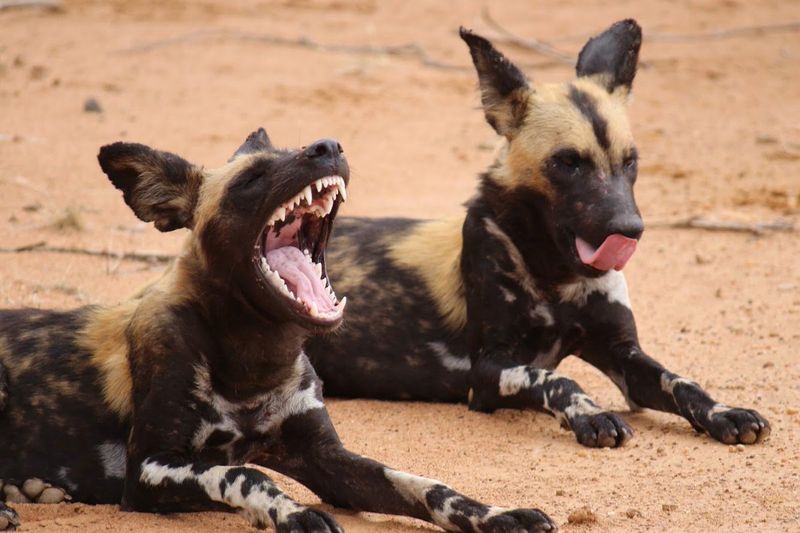
Known for their remarkable hunting skills, African Wild Dogs possess an impressive bite force. These social animals live in packs and coordinate their movements to bring down prey efficiently.
Their powerful jaws allow them to consume their catch quickly, minimizing the risk of scavengers stealing their meal. African Wild Dogs are not just fierce hunters but are also incredibly caring within their packs.
They support the weak and sick, ensuring the survival of even the least fortunate members. This unique trait makes them one of the most cooperative and successful predators in the animal kingdom.
Grizzly Bear
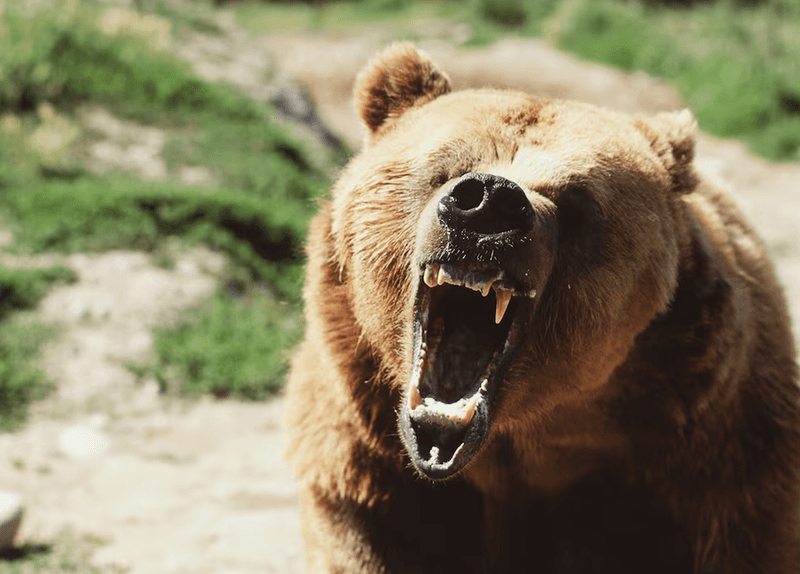
Grizzly bears, known for their immense strength, have powerful jaws capable of exerting up to 975 pounds per square inch. This force is used for both hunting and foraging, enabling them to eat a diverse diet.
These majestic creatures are keystone species in their habitats, influencing the ecosystem around them. Their foraging behavior helps maintain the balance of flora and fauna.
Grizzly bears are symbols of the wild, representing both the beauty and the raw power of nature.
Cougar
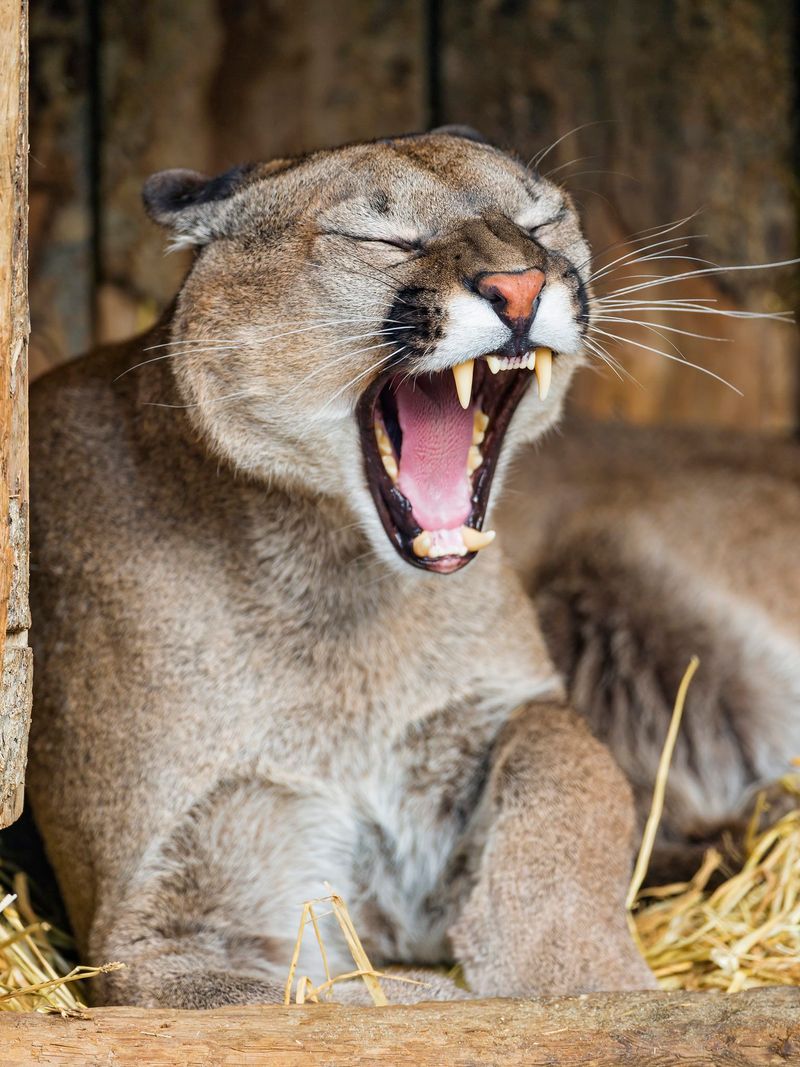
Cougars, also known as mountain lions, have a formidable bite force that aids in their role as stealthy predators. They can exert a pressure of up to 350 pounds per square inch, allowing them to capture and kill prey efficiently.
These solitary cats are adaptive hunters, thriving in a variety of habitats across the Americas. Their presence helps control deer and other prey populations, maintaining ecological balance.
Cougars embody the grace and agility of the feline world.
Wolf
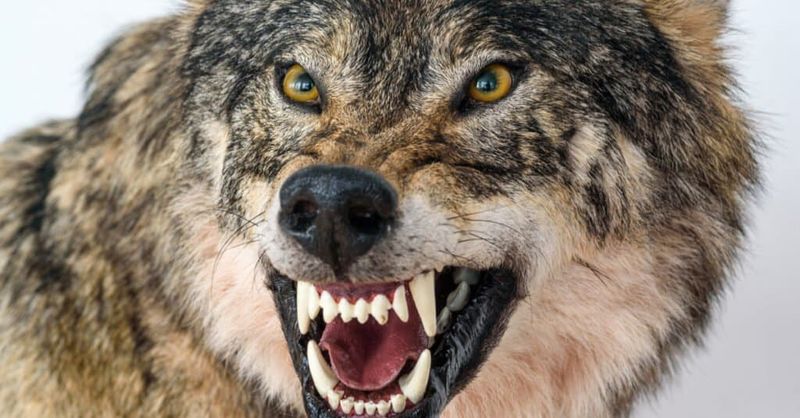
Wolves, intelligent and social predators, possess a bite force of 400 pounds per square inch. This strength is essential for hunting and bringing down large prey like elk and moose.
Living in packs, wolves exhibit complex social structures and communication methods. Their presence is crucial for ecosystem health, as they help manage prey populations and encourage biodiversity.
Wolves evoke a sense of wildness and intrigue, symbolizing the untamed spirit of nature.
Leopard
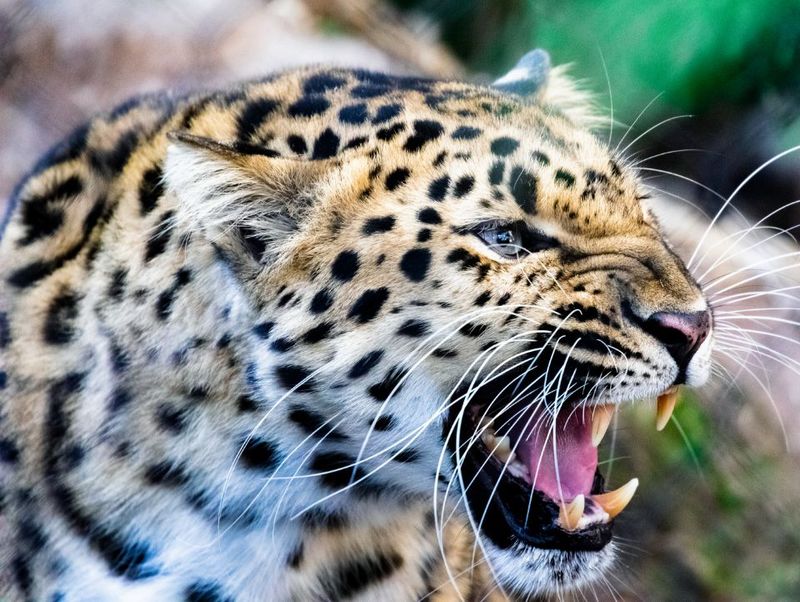
Leopards, known for their adaptability and strength, possess a bite force of 500 pounds per square inch. This enables them to hunt and kill a wide range of prey.
These solitary cats are expert climbers, often dragging their kills into trees to avoid scavengers. Leopards play a significant role in their ecosystems, controlling herbivore populations and maintaining balance.
Their spotted coats and stealthy movements make them one of the most iconic big cats.
Chimpanzee
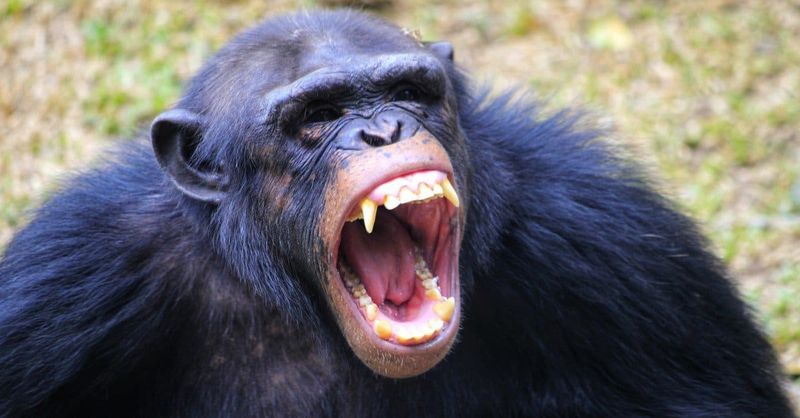
Chimpanzees, our closest relatives, possess a bite force needed for cracking nuts and other tough foods. Their jaws can exert a pressure of up to 390 pounds per square inch.
These intelligent primates are highly social, living in complex communities with intricate social structures. Chimpanzees play a role in their ecosystems by dispersing seeds and maintaining forest health.
Their behaviors and expressions offer insights into our own evolutionary past.
Dingo
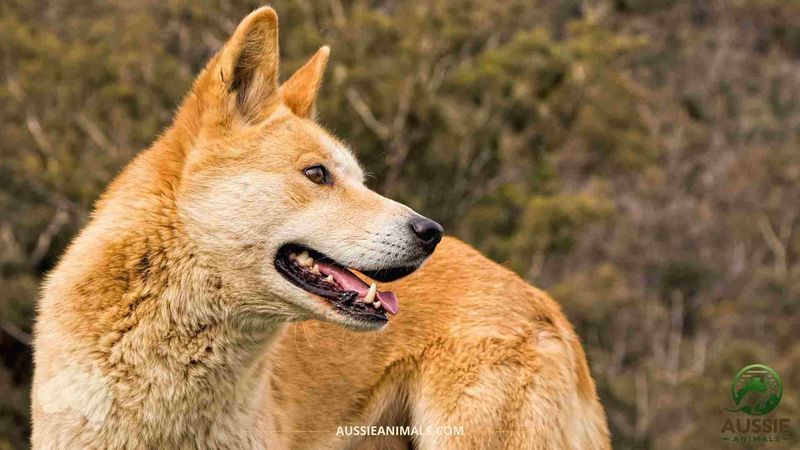
The dingo, Australia’s wild dog, has a bite force that belies its size. With a pressure of up to 317 pounds per square inch, they are skilled hunters.
Dingoes are integral to their ecosystems, controlling populations of smaller animals. Their presence impacts the balance of prey species, contributing to biodiversity.
Despite their contentious relationship with humans, dingoes represent the untamed and rugged nature of the Australian wilderness.
Green Anaconda
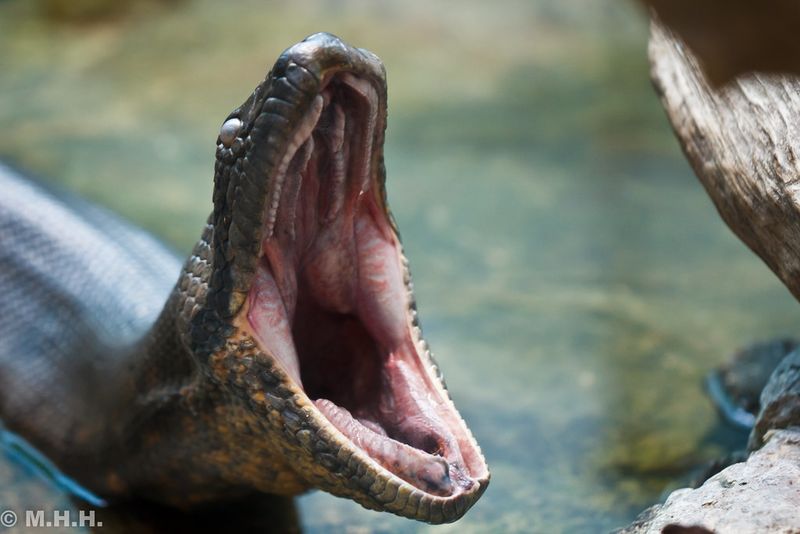
The green anaconda, the heaviest snake in the world, is a true marvel of nature. Found in the swamps and rivers of South America, this non-venomous giant relies on its robust constriction technique to subdue prey.
Its bite, although not its primary weapon, is still formidable, aiding in grasping prey before the deadly embrace. The anaconda’s immense power and size make it a fascinating subject of many myths and legends.
Did you know? Despite its size, the green anaconda is an adept swimmer, using its strength to navigate through its watery domain effectively.
Black Piranha
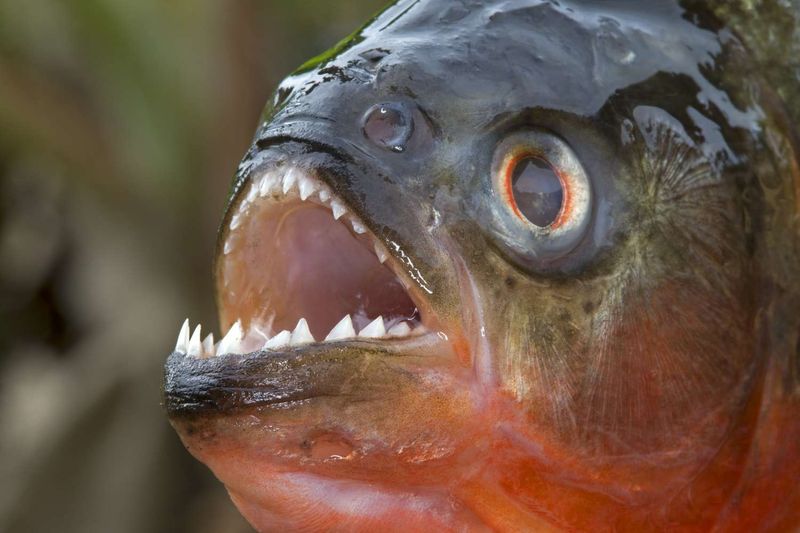
Amidst the murky waters of the Amazon, the Black Piranha reigns supreme with its formidable bite. Renowned for its sharp teeth and strong jaws, this fish can exert a bite force far exceeding its size, making it a fearsome predator.
Swimming gracefully, it uses its bite to crack nuts and hunt prey with precision. The Black Piranha’s bite is not just for feeding; it’s a tool of survival and territorial defense. Encountering this fish is both a thrilling and intimidating experience, reflecting the raw power of nature.
A fascinating fact: its bite force relative to body size is unmatched in the fish world.

